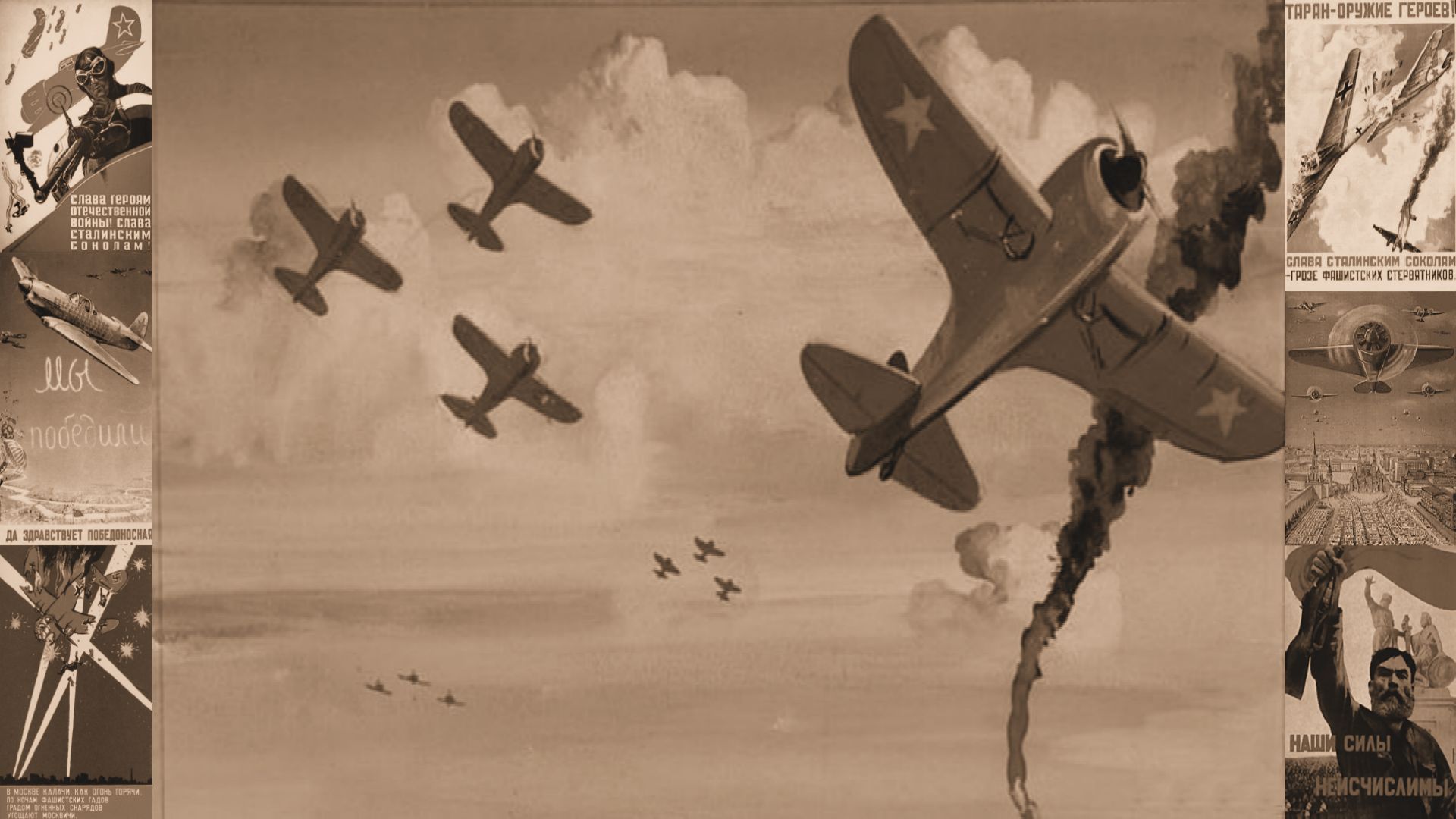The Lavochkin La-5 was a Soviet fighter aircraft of World War II. It was a development and refinement of the LaGG-3 and was one of the Soviet Air Force's most capable types of fighters during the latter half of the Great Patriotic War.
Development
Based on the original design of the LaGG-1 by S.A.Lavochkin, M.I.Gudkov and V.P.Gorbunov, it was found that the LaGG-1, was clearly underpowered and also lacked agility and range, which were the worst faults of the LaGG-1. These problems were addressed by the LaGG-3. By early 1942 however, the shortcomings of the LaGG-3 had caused Lavochkin to fall out of Joseph Stalin's favour, and factories previously assigned to LaGG-3 construction had been turned over to building the rival Yakovlev Yak-1 and Yak-7. The design work required to adapt the LaGG-3 to the new engine and still maintain the aircraft's balance was undertaken by Lavochkin in a small hut beside an airfield over the winter of 1941-1942, all completely unofficially. Lavochkin's team converted one LaGG-3 to have an M-82 radial engine and it offered speed increased from 353 to 373mph and, in particular, improved all-round performance at height. The resulting combination resulted in the La-5 (M.I.Gudkov, one of the original LaGG designers was no longer with the programme, hence La). Introducted into battle over Stalingrad in late 1942, however further development was required. Further refinement of the aircraft involved a fuel-injected engine, further lightening of the aircraft, and fixed slats to improve all-round performance. By July, Stalin ordered maximum-rate production of the aircraft, now simply known as the La-5 and the conversion of any incomplete LaGG-3 airframes to the new configuration. The next variant, the La-5FN, was next upgrade of the La-5. During development, designers realized an improvement of aerodynamics which were recommended on the basis of extensive research in wind tunnels and that they had to reduce structural weight and upgrade the engine with a new more powerful engine, the M-82FN.
Back to Top
In Action
The La-5 first saw combat in the Battle of Stalingrad in 1942. The La-5FN variant arrived on the front some six months later and participated in the Battle of Kursk. In comparison with Luftwaffe fighters, the La-5FN was found to have a comparable top speed and acceleration at low altitude. The superiority of La-5FN over the best modifications of German fighters was soon demonstrated. It possessed a higher roll rate and a smaller turn radius than the Bf109G2 and a better climb rate than the Fw190A-8. However, the Bf109 utilizing MW 50 had superior performance at all altitudes, and the Fw 190A-8 had better dive performance. In the summer of 1943, a brand-new La-5 made a forced landing on a German airfield providing the Luftwaffe with an opportunity to test-fly the newest Soviet fighter. Test pilot Hans-Werner Lerche wrote a detailed report of his experience. After conducting extensive testing he found that:- "The La-5FN is a very hard plane to hit and most people underestimate how good the plane is at most things. It is pretty quick, over 600 kph at low level while retaining a far better than average turn rate, both instantaneous and sustained. If you underestimate it you may find yourself in trouble. Since you can assume the La-5 is usually operating at low levels, try and get above it and use you altitude advantage when attacking. Most La-5's tend to like to turn-fight more than then should though, so if you can get one into a defensive turning fight while you make attacks from above then that is best. Escaping from an La-5 shouldn't involve a dive to low level as the plane is strongest at lower altitudes. Try and stay high while building enough energy and speed to fight with. The La-5 does have a somewhat abrupt stall if pushed too hard. It can also easily overshoot and pass right by you." Lerche's recommendations were to attempt to draw the La-5 to higher altitudes, to escape attacks in a dive followed by a high-speed shallow climb, and to avoid prolonged turning engagements.
The La-5 was the fighter of choice for Soviet aces. Ivan Kozhedub who brought down 62 German planes also flew in an La-5FN. On the 19th of February 1945, Kozhedub, while flying an La-7, was free hunting over Frankfurt Germany, where he and his wingman spotted an Me 262 flying low following the Oder river. Upon closing at maximum speed, he was cut off by his wingman Dmitrii Titarenko who made a rash attack on the Me 262 by firing at it. However, the Me 262, flown by Unteroffizier Kurt Lange of 1./KG(J) 54 made the mistake of breaking left, shortening the gap between him and Kozhedub, allowing Kozhedub to accurately fire on the Me 262 and bring it down.
Back to Top
Production and Losses
When the La-5 was withdrawn from production late in 1944, a total of 9,920 aircraft of this type (including La-5UTI two-seat trainers) had been built as it was being replaced by the La-7. However, La-5 losses were high, the highest of all fighters in service in USSR, losing 2,591 La-5s through combat and accidents. A number of La-5s continued in the service of Eastern Bloc nations after the end of the war, including Czechoslovakia. La-9s' served in the North Korean Air Army at the outbreak of the Korean Conflict.
Back to Top


